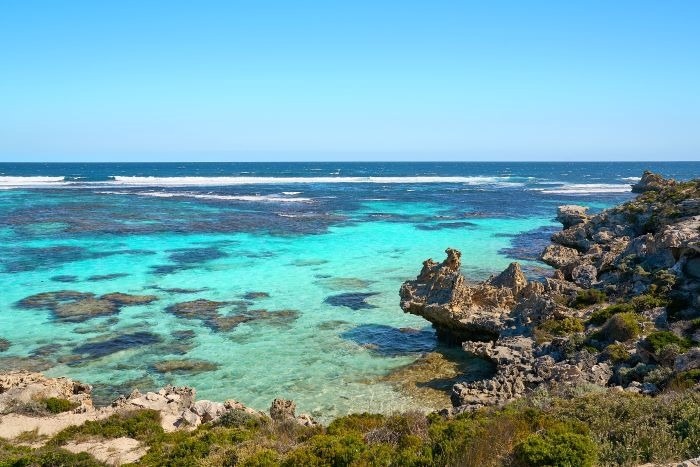A new Curtin University study investigating the complex evolution of two iconic Western Australian landmarks, has traced their transformation over thousands of years and offers a glimpse into their future.

Image Credit: Pedro Szekely/Wikimedia Commons
Researchers from the Timescales of Mineral Systems Group in the School of Earth and Planetary Sciences collected sedimentary samples from multiple locations along Perth’s coastline, waterways and even the sea floor to track changes which occurred as the ocean levels rose dozens of meters over thousands of years.
Study lead Dr Andreas Zametzer said the study’s dive teams found particular types of mineral grains offshore, which confirmed the complex geological histories of Rottnest Island (Wadjemup in the Noongar language) and the Swan River (Derbarl Yerrigan).
The distinct group of ancient grains off Rottnest Island was dated as up to 3.6 billion years old.
These same grains can be traced into the modern Swan River estuary and the Avon River tributary which had delivered and deposited them thousands of years ago.
“Perth is sitting on a continental margin that is drowning,” Dr Zametzer said.
“Rottnest Island used to be the tip of a peninsula until about 6500 years ago similar to what we see in the Shark Bay region and because it's still part of the drowned continental margin, the ocean between Perth and Rottnest is hardly deeper than 20 m in most places.
“We also now know for sure the mouth of the Swan River used to be north of where Rottnest is today.”
Dr Zametzer said the researchers were stunned to find the ancient, river-transported mineral grains so far out to sea.
“We would have expected the grains to have eroded and washed away because they were in a very turbulent, high-energy environment of waves and tides,” he said.
“But the distinctive mineral fingerprints of the river are still sitting there despite thousands of years of sea- level changes and shelf reworking.
“We have this river system imprint preserved offshore, confirming the coast’s history.”
Dr Zametzer said it was important to learn how coastlines have adapted and changed in the past to help understand what rising sea levels will mean in the future.
“It’s quite shocking to think about how fast some geological processes actually happen with sea levels continuing to rise quickly.”
‘When the river meets the sea: Transport and provenance in a long-lived estuary’ was published in Basin Research.